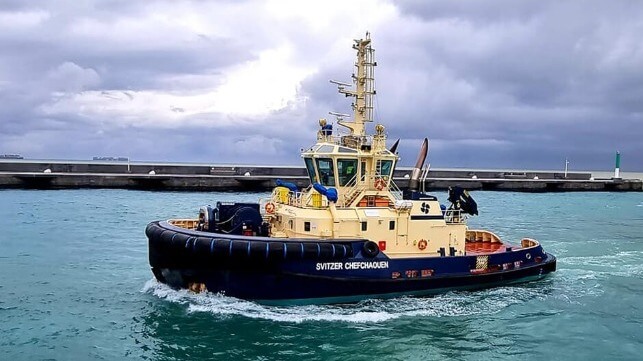Svitzer Tugs Reduce CO2 Emissions by Slow Steaming to and from Jobs

The shipping industry is discussing slow steaming as a means of reducing emissions and beginning to meet CO2 reduction targets for long-distance ocean routes. Now comes word from A.P. Moller-Maersk’s tugboat operations, Svitzer, that it has been able to achieve similar results for its tugboats during a trial program that they are rolling out across the global fleet.
The company launched a pilot program in late 2021 across Svitzer’s UK operations. Tug crews were told to navigate at a maximum speed of eight knots during mobilization and demobilization. The company said these are periods of time when the vessels are not engaged in hauling or complicated maneuvers but where the crew can reduce power without sacrificing operational needs. The result was that they were able to successfully prevent 1,000 tonnes of CO2 from being emitted into the atmosphere.
The company says that the initiative proved that small behavioral changes, when implemented alongside more ambitious and long-term shifts such as fuel and tug design, can have an immediate and measurable impact on the CO2 emissions of the global fleet. Svitzer launched a multi-faceted decarbonization strategy in May 2022 and now plans to roll out the “Aim for 8” initiative more broadly.
The speed target of eight knots was chosen based on an analysis of Svitzer’s tug fleet while mobilizing to and from a job. The program incentivizes crews to try to achieve the “sweet spot” of potential fuel efficiency that the company’s analysis identified.
“We think that this is real proof of the impact that simple adjustments can make on the industry’s sustainability journey,” said Kasper Karlsen, regional COO, Svitzer Europe. “We’re looking forward to implementing Aim for 8 more widely across Svitzer’s global operations and making an even greater impact on our carbon emissions.”
There is a huge potential for speed optimization during mobilization and demobilization, compared to more operationally sensitive moments during a towage job, according to Svitzer. This is because there is less power demand and more predictable conditions. For some individual tugs, optimizing speed to eight knots during mobilization and demobilization improved their efficiency by around 20 percent.
“We have been able to make this tangible impact at no cost to our operations and with very little disruption to our way of working, simply by asking our crews to make a small change in behavior and stay below eight knots before and after the towage job,” said Karlsen.
Svitzer operates a fleet of 400 tugs globally that it estimates emits the same amount of CO2 every year as 100,000 diesel-powered cars.
